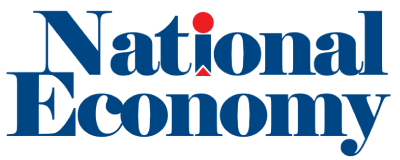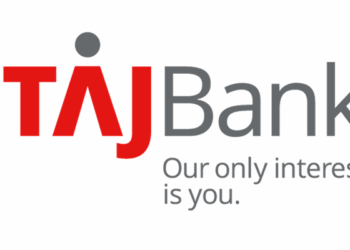Although the recapitalisation exercise has since commenced on July 31, 2025, according to the National Insurance Commission (NAICOM)’s timetable, the exercise seems to have stalled, as insurance companies are confused about what qualifies as capital under the ongoing exercise, NATIONAL ECONOMY learnt.
This is as labour groups in the banking and insurance sectors have vowed to fight for their members’ rights in the ongoing recapitalisation exercise.
Unlike the previous exercises, the current process did not consider certain assets, especially buildings, admissible as capital.
In a brief explanation by NIIRA 2025 on what qualifies as minimum capital requirement for existing company, the Act states that, “the excess of admissible assets over liabilities, less the amount of own shares held by the firm; subordinated liabilities subject to approval by the commission (NAICOM) and any other financial instrument as may be prescribed by the commission.”
The commission had, in a circular sent earlier to insurance and reinsurance firms said, it shall, in due course, issue comprehensive guidelines and circulars detailing the modalities for the recapitalisation exercise, adding that, the expected circulars, will detail: the composition of the MCR, Acceptable forms of capital, Procedures for capital verification, Qualifying assets for MCR purposes and criteria such as title, ownership, and existence as well as a standardised template for computation of MCR.
On inadmissible assets, insurers and reinsurers were informed that: Encumbered assets, assets without perfected title or ownership, and assets not in the full possession of an insurer/reinsurer shall be inadmissible for the purpose of meeting the MCR; even as Assets that exceed prudential thresholds or do not meet the prescribed criteria shall also be deemed inadmissible.
Following the above and from NATIONAL ECONOMY findings, the regulator is working on a comprehensive recapitalisation guideline focusing on capital, which should be out in a couple of weeks.
Without this, it was learnt that the process continues to drag, with most operators confused about the admissibility or otherwise of the instruments of capital they have. Currently, they are not certain whether the capital is only the shareholders’ fund or other items like retained earnings, reserve, or other investments in fixed-income assets like bonds and treasury bills.
To this end, they would rather wait on NAICOM for further breakdown and directives before they embark on board meetings to come up with the best recapitalisation template for their respective companies and the amount they expect to raise to shore up their capital.
While furious that the one-year deadline is too short, they felt NAICOM, too, is not helping matters with its sluggishness in coming up with the expected circulars on what is admissible as assets. They thereafter urged the regulator to speed up this to ensure that operators capitalised within the given timeframe.
Moreover, with banking recapitalisation ongoing and now insurers, shareholders were indifferent to putting their money in insurance shares when the previous ones they did at the last exercise in 2007 failed to bring any meaningful investment returns.
Speaking with NATIONAL ECONOMY, Boniface Okezie, president of the Progressive Shareholders Association of Nigeria (PSAN), stated that public shareholders are unhappy with underwriters because their previous investments in the insurance industry have yielded no good fruit.
He said that most insurance stocks have not paid dividends or bonuses to shareholders in recent years as a result and that some of these stocks have even depreciated in value; thus, it doesn’t make any business sense to sell them.
“So, most of us are not happy with the situation of things. It wouldn’t make any sense for us to continue to invest in a venture that isn’t prosperous. NAICOM is also not helping these insurance companies, as a regime of heavy sanctions has drained the profit some of them have made to an extent that they can give value to shareholders.
He said the regulators should be proactive and corrective rather than being draconian and reactive, believing the regulator, too, should share in the blame for the sorry state of the insurance sector.
But on his part, the group managing director of Lancelot Ventures Limited, Adebayo Adeleke, said, though the July 30th, 2025 deadline is ticking fast, the committee appointed to manage this recapitalisation exercise should move with speed, especially in the area of admissible capital, so that underwriters can then determine their following line of action.
Adeleke, who was once the secretary of Independent Shareholders Association of Nigeria (ISAN) said, though, insurance stocks may not have given good investment returns like their counterparts in other sectors, he said, in recent times, some of them have shown strong fundamentals, believing and hoping the NIIRA 2025 will do the magic and reposition the industry for the better.
If this is done, the distinguished shareholders expect the industry to begin to repay the loyalty of shareholders who have stood by the companies in the sector during their trying times.
In response to NATIONAL ECONOMY enquiries as regards preparation of the group to salvage the plight of insurance staff during the ongoing recapitalisation exercise, the president, the Association Senior Staff of Banks, Insurance & Financial Institutions in Nigeria(ASSBIFI), Comrade Olusoji Oluwole said, ‘the banking recapitalisation has been relatively smooth with the reports received. We know at least one merger plan, and the progress is being monitored. We are, however, awaiting guidelines for the Insurance companies’ recapitalisation.”
On his part, the president of the National Union of Banks Insurance and Financial Institutions Employees (NUBIFIE), Anthony Abakpa, said that banks and insurance recapitalisation have both positive and negative implications, saying that, in the midst of it, the group will continue to advocate better welfare for staff affected by the exercise.
Reeling out the positive implications of the exercise in both sectors, he listed improved financial performance, economies of scale and efficiency, enhanced competitiveness, increased public confidence, risk diversification and technological advancement.
Listing the negative implications, he said, a major negative consequence of mergers and acquisitions (M&As) is the inevitable reduction in workforce as the new, combined entity seeks to eliminate duplicate roles and streamline operations, hence, this leads to job insecurity and can negatively impact the economy.
“As a trade union, we will not fault regulatory issues, but we place more emphasis on the job safety of our members,” Abakpa pointed out.



